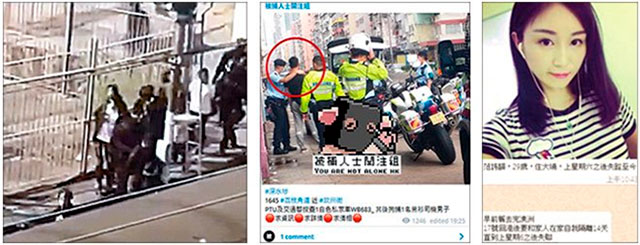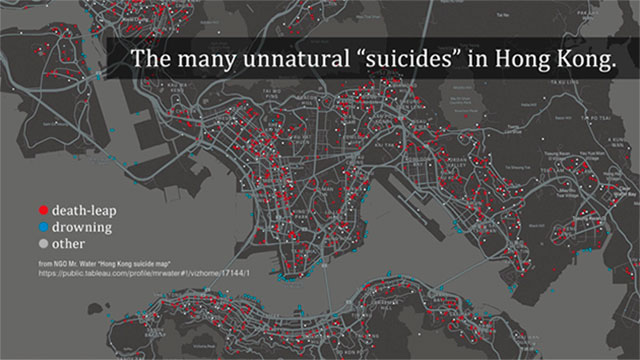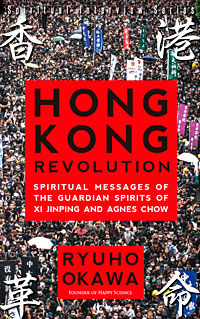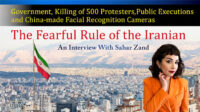The Start of Hong Kong’s Uyghurization
Hong Kong’s Gradual Transformation Into Uyghur
Xinjiang’s armed police were introduced, and Xinjiang-style concentration camps were built──
Today’s Xinjiang is tomorrow’s Hong Kong, and the day after tomorrow’s Taiwan, and the next day’s Japan—.
These words were spoken by the Hong Kong protestors in 2019. It is not just a slogan anymore.
It may be difficult to face the events happening today.
Still, the people in these countries must be saved by disclosing information about what is really happening and by the international community keeping a close eye on them.
Around a year has passed since the national security law was implemented in Hong Kong. During this time, the public’s attention has been on the coronavirus and the U.S. presidential election. However, while this has been going on Hong Kong has transformed into a completely different city.
First of all, let us summarize the background of the democratic oppression that was “publicly reported.”
When a large-scale protest occurred in 2019, the authorities attacked the young citizens with water trucks, tear gas bullets, rubber bullets and, at times, actual bullets. Numerous activists were arrested. According to reports, the number exceeded 10,000.
On June 30, 2020, the national security law was enacted and enforced. To date, nearly 100 people at least have been arrested for violating the law and are awaiting court rulings (as of mid-May 2021). The maximum sentence for breaking this law is life imprisonment, which is a heavy punishment to say the least. There is also the possibility that offenders will be sent to mainland China for trial.
Further, under the national security law a secret police organization called the Office for Safeguarding National Security was established, which is under the direct control of the Chinese government.
Sensing a crisis situation, 12 activists tried to escape to Taiwan by boat in August. However, they were detained by the China Coast Guard and taken to mainland China.
Hotline For Reporting Others
In November the same year, the authorities also opened a hotline for people to anonymously report those who violated the national security law. It is said that 40,000 reports from pro-Chinese groups all over Hong Kong flooded the hotline (as of Feb. 2021).
In addition, the authorities are accelerating the introduction of a “patriotic education,” which has been created based on the national security law. They are also reforming the system so that only patriots can become members of the legislature.
The situation is already serious. It has gone far beyond the point where the international community should step in and stop the human rights oppression. However, investigation by our editorial board has revealed a much more frightening situation developing behind the scenes.
Hong Kong is starting to become like Uyghur.
The Truth Behind the 2019 Protests
Xinjiang’s Armed Police “Eliminated” Hong Kong People
“Dad, mom — when you find this letter, I might have been arrested or died. I’ve always tried my best to become a so-called worthy person in your eyes at school and at work. But more than that, I want to be a person with a conscience, not a selfish coward” (*1).
This letter was left by a 22-year-old student amid the protests in 2019. Many activists wrote these kinds of letters.
However, in Japan, only the “accidental” victims of the protest were reported, such as a person who fell from a high place while they were dodging tear gas. The death penalty is not listed as a punishment in the national security law. Did the young men leave these letters alluding to their deaths solely as a “ritual” to heighten their feelings?
They did not. To the Hong Kong people, the spectre of death was something much more common and real to them than could be seen from the outside.
“There were strong suspicions that many activists went ‘missing’ because they died during police conflicts or from torture during interrogations,” claimed Dr. Joseph Cheng, a former professor at the City University of Hong Kong who supported pro-democracy activists in various ways, during an interview with our editorial board.
(*1) From New York Times documentary video.( https://www.nytimes.com/video/world/asia/100000006754031/hong-kong-protesters.html)
Activists Go “Missing”
The activists were constantly in touch with each other through messaging apps such as Telegram that were unlikely to be intercepted by authorities. They exchanged information such as policies that they would like to align themselves with, the location of the police and where to protest. Amongst these exchanges were many announcements about activists who had gone missing.
“Missing Person: Mr. __, 15 years old, missing since __. Approximately 160cm tall, long black hair, sharp chin.”
“#__ (location name). Around _:_, a man was arrested by the police and put in an armored car. Seeking any information about the man.”
“Two males assaulted two girls at __ and drove off with them in the car. Asking for any information.”
These notices about missing persons and sightings were constantly exchanged online.
A human rights researcher, Mr. Tony (name has been changed for this article), who responded to the editorial board interview, was compiling this type of information locally and evaluating it at the time of the event. However, he said it was impossible to grasp the whole picture.
“Even if information was going around that someone was missing, it couldn’t be confirmed where that person was. The police would not tell us, even if there was the possibility of arrest. On the other hand, even when a reporter was at the scene of the arrest of an activist, it was impossible to verify whether that person went ‘missing’ later, because everyone was wearing masks,” Mr. Tony said.
Various reasons were given to explain the missing persons. “The arrested person is waiting for trial at the police station and their families have not been informed of their whereabouts,” “those arrested with witnesses were safely released later,” “the arrested person disappeared for some mysterious reason,” or that “they were taken away by a different method than usual,” etc.
“The whole thing was chaotic. Researchers, lawyers and even investigators like us felt very powerless. No one succeeded in examining and analyzing all the cases,” said Mr. Tony.
It was a chaotic state where no one knew what was going on—in other words, anything could have happened.

Posts soliciting information about missing persons (right), and posts soliciting identification information for young people arrested at scenes of protest (center). Hong Kong’s political group, Demosisto (now disbanded), released a viral video at the time announcing that “the arrested activists are put on railroads going to mainland China” (left).
Lesser-Known Activists Sent to Mainland China
“Some of the lesser-known activists are believed to have secretly been transferred to mainland China,” said pro-democracy activist Simon Cheng.
Surprisingly, Mr. Simon has experienced this first-hand. He used to work for the British Consulate-General in Hong Kong, but when he visited mainland China in Aug. 2019, he was detained and tortured by the secret police for 15 days. When this led to diplomatic protests, however, Mr. Simon was released. He fled to the U.K. and shared his experience with the media.
“[I was detained because] I wasn’t famous at the time. It was a rare case where their secrets were exposed internationally. During my torture, I was told not only once but twice that ‘some of the protestors are being detained in mainland China.’ I witnessed some of the detained protestors myself as well,” he said.
6,000 Suspicious Deaths in a Year!?
The missing are not only suspected of having been transferred to mainland China. Dr. Joseph Cheng, mentioned earlier, states, “There are suspicions that the bodies of activists who died during detention were thrown into oceans or mountains, and when discovered, their deaths were considered suicides.”
The most famous such incident, covered by some North American media outlets, was the death of a 15-year-old girl, Ms. Chan Yin-lam. Ms. Chan went missing on her way home in Sept. 2019. Three days later, her body was found in the sea. The police labelled the case as a “suicide,” but Hong Kong citizens believe there is a high possibility of murder because Ms. Chan was a swimmer and her body was completely naked when she was found.
But this is just the tip of the iceberg. An entrepreneur and pro-democracy activist with strong ties to the U.S. government, Mr. Elmer Yuen, told the editorial board, “There were 6,584 suspicious deaths in 2019 alone.”
Most of the bodies of those who died had strange characteristics, such as the strong likelihood that they were unconscious when they jumped, or that they were half naked.
Hong Kong activists aggregated “suicide reports” and plotted accident scenes on a map (“Hong Kong suicide map” by Mr. Water , from NGO https://public.tableau.com/profile/mrwater#!/vizhome/17144/1).
“Extralegal Executions” Conducted
“Only 27 of these cases were further investigated by the police. For all the rest they considered that no further investigation was needed. However, we discovered that many of the bodies that were found matched those who went missing,” said Mr. Elmer.
Mr. Elmer shared several documents that compared photos of the discovered bodies with people detained by the police, which showed that there were matches (although they cannot be published in this article).
“Everyone in Hong Kong knows who killed them. They are Beijing authorities wearing the uniforms of the Hong Kong police. The missing people are the victims of ‘forced disappearances,’ and the bodies are the victims of ‘extralegal executions,’” told Mr. Elmer.
Testimonies of Violence And Rape After Arrest
There is one problem that cannot be ignored when considering these issues. There are testimonies from countless activists who claim that, after they were arrested, they were subjected to extraordinary violence despite their nonresistance.
This includes:
- A policeman kicked my chest with his knee and broke my bones, so I was hospitalized for months.
- My eye was forced open and exposed to the light of a laser pointer.
- A protestor who could not withstand torture attempted suicide and was harshly beaten.
- A teenage girl was gang raped and made pregnant (*2).
If these actions were common, how can it be possible that there were no victims?
Mr. Elmer spoke further about an even more terrifying background: “Hong Kong was filled with Chinese armed police during the protests. These people had trucks and could enter and leave Hong Kong freely. They wore Hong Kong police uniforms, beat children, and raped young girls. And this unit came from Xinjiang. They were well-trained and have tortured and killed numerous Uyghurs. Killing young people, stripping them naked and throwing them away is something they do often, so they don’t think there is anything wrong with it.”
Given that, it signifies that in 2019 the Chinese government had no problem treating Hong Kong like Uyghur.
Mr. Simon Cheng said, “I think Hong Kong is becoming like Xinjiang, because Beijing considers Hong Kong to be one of the most unstable regions. This is exactly why they are trying to invest more resources into Hong Kong to shut down any dissent.”
(*2) Reported in U.S. government report from Congressional Executive Commission on China (CECC).






















